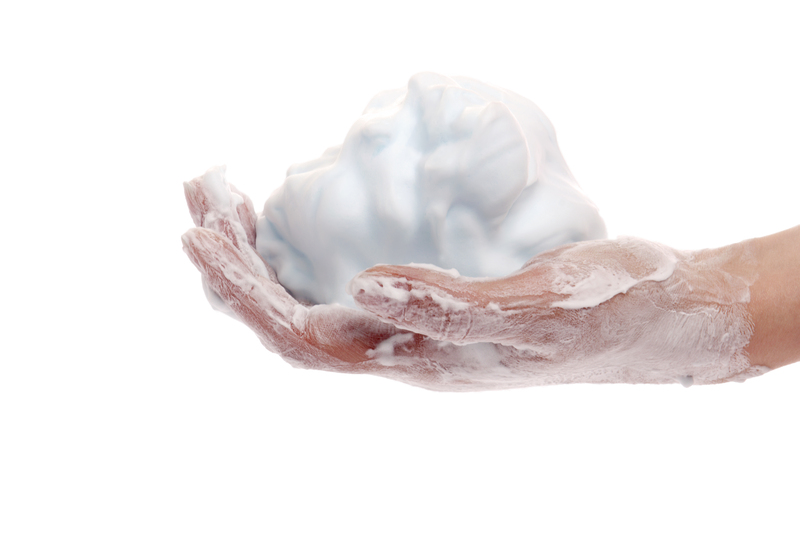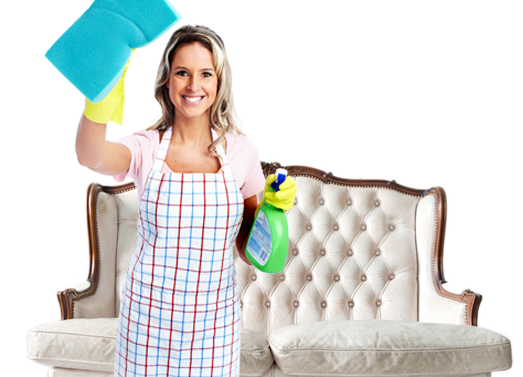The Pros and Cons of Steam Cleaning a Leather Sofa
Posted on 18/05/2025
The Pros and Cons of Steam Cleaning a Leather Sofa
Leather sofas are a favorite for many homeowners thanks to their elegant aesthetic, durability, and luxurious comfort. However, keeping your leather couch pristine is a task that requires the right cleaning methods. In recent years, steam cleaning leather sofas has gained popularity as an effective way to remove dirt, bacteria, and grime. But is steam cleaning a leather sofa really the best approach? In this comprehensive guide, we'll explore the advantages and disadvantages of steam cleaning leather furniture, discuss alternative methods, and provide expert tips to help you make an informed decision.
Table of Contents
- Understanding Leather Upholstery
- How Does Steam Cleaning Work?
- Pros of Steam Cleaning a Leather Sofa
- Cons of Steam Cleaning a Leather Sofa
- Alternatives to Steam Cleaning Leather Furniture
- Best Practices for Cleaning Leather Sofas
- Conclusion
Understanding Leather Upholstery
Before deciding whether steam cleaning your leather sofa is appropriate, it's essential to understand the material itself. Leather upholstery comes in various types, including aniline, semi-aniline, and pigmented leather. Each type reacts differently to moisture and cleaning methods.
- Aniline Leather: This is the most natural and genuine form of leather, characterized by its softness and visible grain. However, it is more susceptible to staining and does not tolerate excess moisture well.
- Semi-Aniline Leather: Treated with a light protective coating, this leather is slightly more resistant to spills yet still maintains a natural feel.
- Pigmented or Protected Leather: The most durable leather for sofas, featuring a polymer surface coating, making it resistant to scratches and moisture.
Understanding the type of leather on your sofa is crucial before opting for any deep cleaning method, including steam cleaning.
How Does Steam Cleaning Work?
Steam cleaning employs hot vaporized water to clean and sanitize surfaces. A steam cleaner heats water to produce steam, which is then directed onto the surface using a nozzle or brush attachment. The high temperature helps break down grime, remove bacteria, and loosen dirt, making it easier to wipe away contaminants.
- No Harsh Chemicals: Most steam cleaners don't require detergents, making them a more eco-friendly option.
- Deep Penetration: Steam can reach into crevices and pores, offering a deeper clean than some traditional techniques.
While highly effective for various surfaces, the impact of steam cleaning on leather upholstery must be carefully considered owing to the sensitive nature of the material.
Pros of Steam Cleaning a Leather Sofa
Let's explore the key benefits of steam cleaning a leather sofa and why some homeowners and professionals might recommend this method.
1. Efficient Removal of Germs and Allergens
Steam reaches temperatures high enough to kill up to 99.9% of bacteria, dust mites, and other common household allergens. For families with pets, children, or allergy sufferers, this can mean a healthier living environment.
2. No Need for Toxic Chemicals
Many commercial leather cleaners contain strong chemicals that could damage the leather over time or leave unpleasant odors. Steam cleaning, by contrast, uses pure water vapor, making it a green cleaning method that's kinder to the environment and safer for your family.
3. Deep Cleaning Effectiveness
The penetrating steam can remove embedded dirt and grime from intricate creases and corners of your leather sofa. This is particularly advantageous for sofas that haven't been professionally cleaned in years.
4. Quick Cleaning Process
Compared to meticulously hand-scrubbing with a cloth, steam cleaning leather furniture can be much faster, saving time and effort, especially when cleaning larger sofas or sectionals.
5. Improved Odor Removal
Leather frequently absorbs odors from pets, food, and smoke. The high temperature of steam can neutralize and eliminate many unpleasant smells far more effectively than basic surface cleaning.
6. Limited Use of Moisture
Unlike soaking or wet-wiping, steam cleaners apply moisture in the form of vapor. This means the surface of your leather sofa dries more quickly, reducing the risk of saturation compared to traditional methods.
Cons of Steam Cleaning a Leather Sofa
While steam cleaning has its perks, it also comes with potential drawbacks. Here are some of the most significant risks associated with steam cleaning a leather sofa.
1. Potential for Moisture Damage
Leather is a porous natural material, and excessive introduction of moisture can cause swelling, warping, or permanent water stains. Aniline leather, in particular, is highly susceptible to water damage.
2. Risk of Cracking and Drying
The heat from a steam cleaner can strip leather of its natural oils. Without adequate reconditioning after cleaning, the sofa may dry out, leading to unsightly cracks or fading.
3. Color Fading and Discoloration
Intense heat from steamers may damage the leather's finish or protective coating, causing discoloration, dullness, or patchy spots on dyed leather. This is especially relevant for brightly colored or delicate vintage pieces.
4. Not Suitable for All Leather Types
As previously mentioned, not all leather is created equal. Using a steam cleaner on unfinished leather, suede, or nubuck can irreversibly harm the material. Always consult your sofa's manufacturer guidelines before proceeding.
5. Voiding Manufacturer Warranties
Some furniture manufacturers expressly prohibit steam cleaning leather sofas. Ignoring their guidelines might void your warranty or compromise possible future repairs.
6. Professional Equipment & Expertise Required
Achieving a safe and thorough result requires the right equipment and technique. DIY users risk applying too much steam or using the wrong attachments, potentially causing damage instead of cleaning.
Alternatives to Steam Cleaning Leather Furniture
If you're concerned about the possible disadvantages of steam cleaning a leather couch, consider these alternative solutions:
- Gentle Soap and Water: Mix a mild, pH-neutral soap with distilled water. Dampen a soft cloth, wring it out thoroughly, and gently wipe the surface. Always follow by drying with a clean towel.
- Commercial Leather Cleaners: Choose products specifically formulated for your leather type. Test on a hidden area first to check for any reactions.
- Leather Conditioning: After cleaning, use a quality leather conditioner to restore oils, keep the material supple, and prevent brittleness.
- Professional Leather Cleaning Services: Certified technicians have specialized tools and cleaning agents tailored to your sofa's needs. This is the safest option for valuable or antique leather furniture.
- Vacuuming: Regularly vacuum your sofa using a soft brush attachment to remove surface dust and crumbs, reducing the need for intense deep cleaning.
Each method has its own pros and cons, but all offer a safer alternative than steam for delicate or untreated leather upholstery.
Best Practices for Cleaning Leather Sofas
Regardless of your chosen cleaning method, adhering to industry best practices extends the lifespan and appearance of your leather sofa.
Regular Maintenance and Cleaning Habits
- Dust weekly with a dry microfiber cloth to prevent buildup of particles that can scratch the surface.
- Immediately blot spills with a clean, absorbent towel--never rub.
- Avoid direct sunlight and heat sources, which cause fading and drying.
- Rotate cushions regularly to encourage even wear.
- Use leather protectant sprays as recommended for your specific sofa.
Spot Cleaning Tips
For small scuffs or stains, use a damp cloth and a very mild soap, but always test in an inconspicuous area first. Never saturate the leather, and dry thoroughly.
When to Consider Steam Cleaning a Leather Couch
If you deem steam cleaning necessary, follow these guidelines:
- Ensure your sofa is made of pigmented or protected leather, never aniline or unfinished varieties.
- Test the steamer on a hidden area first for discoloration or texture changes.
- Use the lowest steam setting and keep the nozzle at least a few inches from the surface.
- Never hold the steam in one place for more than a second or two.
- After cleaning, apply a leather conditioner to replenish lost oils.
When in doubt, consult a professional upholstery cleaner specializing in leather care.
Conclusion
Steam cleaning a leather sofa can offer undeniable benefits, from germ eradication and odor removal to eco-friendliness. However, the risks linked with heat, moisture, and possible leather damage mean it's not universally suitable for all types of leather upholstery. Factors like the kind of leather, the condition of your sofa, and manufacturer guidelines play crucial roles in determining whether steam cleaning is a safe option for your couch.
For most homeowners, regular dusting, prompt spill attention, the use of appropriate leather cleaning products, and professional cleaning when needed remain the go-to methods to maintain a stunning leather sofa. If you decide to try steam cleaning, always proceed with caution, test first, and finish with conditioning to keep your leather supple, beautiful, and resilient for years to come.
Ultimately, balancing cleanliness with careful leather maintenance will ensure your investment continues to provide comfort and style for many years.






